23 High Zinc Foods for Vegans and Vegetarians
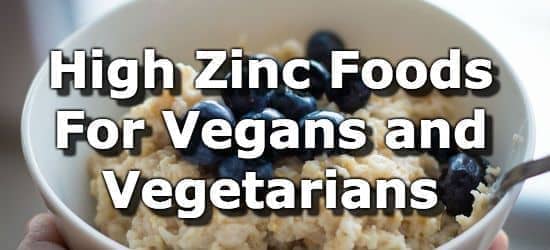
Zinc is an essential nutrient required by the body for creating over 300 enzymes, and it is the most abundant metal in the body after iron.
Health benefits of zinc include enhanced immune function, faster wound healing, and possibly reduced duration of symptoms of the common cold. Beyond this, zinc is vital for the proper functioning of the human body in general.
Zinc deficiency can lead to hair loss, impotence, diarrhea, delayed wound healing, abnormal taste, and mental fatigue.
Vegans and vegetarians need to be especially aware of zinc, as zinc availability is lower in plant foods than in animal foods. Further, the amount of zinc found in vegetables and other plant foods can vary greatly depending on the zinc content of the soil where they were grown.
Do phytates harm zinc absorption?
While phytates, which are present in whole-grain breads, cereals, and legumes, do somewhat inhibit the absorption of zinc, these foods are still a good source of zinc. Vegans and vegetarians should be aware of this and aim to consume 200% of the daily value (DV) to compensate for the bioavailability of zinc.
Vegan and vegetarian sources of zinc include fortified cereals, wheat germ, tofu, lentils, yogurt, oatmeal, wild rice, squash seeds, and milk. The daily value (DV) for zinc is 11mg per day.
Below are 23 vegan and vegetarians foods high in zinc. For more, see the articles on high zinc nuts, high zinc fruits, and high zinc vegetables. You can also create your own list using the nutrient ranking of over 200 vegetarian foods high in zinc.
-
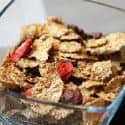 1. Fortified Cereals
1. Fortified Cereals
Zinc
per 3/4 CupZinc
per 100gZinc
per 200 Calories19mg
(170% DV)64mg
(585% DV)33mg
(300% DV)See the ranking of 200 breakfast cereals high in zinc.
-
2. Toasted Wheat Germ
Zinc
per OzZinc
per 100gZinc
per 200 Calories5mg
(43% DV)17mg
(152% DV)9mg
(79% DV) -
 3. Firm Tofu
3. Firm Tofu
Zinc
per CupZinc
per 100gZinc
per 200 Calories4mg
(36% DV)2mg
(14% DV)2mg
(20% DV) -
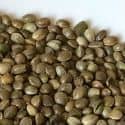 4. Hemp Seeds
4. Hemp Seeds
Zinc
per OzZinc
per 100gZinc
per 200 Calories3mg
(26% DV)10mg
(90% DV)4mg
(33% DV)Not sure how to use hemp seeds? Sprinkle them on top of cereal, salads, or oatmeal.
See the top 10 nuts and seeds high in zinc.
-
 5. Lentils
5. Lentils
Zinc
per CupZinc
per 100gZinc
per 200 Calories3mg
(23% DV)1mg
(12% DV)2mg
(20% DV)See the nutrient ranking of all beans and lentils high in zinc.
-
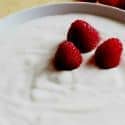 6. Low-Fat Yogurt
6. Low-Fat Yogurt
Zinc
per CupZinc
per 100gZinc
per 200 Calories2mg
(22% DV)1mg
(9% DV)3mg
(31% DV)See all dairy foods high in zinc.
-
 7. Oatmeal
7. Oatmeal
Zinc
per CupZinc
per 100gZinc
per 200 Calories2mg
(21% DV)1mg
(9% DV)3mg
(26% DV) -
 8. Wild Rice
8. Wild Rice
Zinc
per CupZinc
per 100gZinc
per 200 Calories2mg
(20% DV)1mg
(12% DV)3mg
(24% DV)- 13% DV zinc in 1 cup of brown rice
See the nutrient ranking of grains high in zinc.
-
9. Seeds (Squash and Pumpkin Seeds)
Zinc
per 1oz HandfulZinc
per 100gZinc
per 200 Calories2mg
(20% DV)8mg
(69% DV)3mg
(24% DV) -
 10. Milk
10. Milk
Zinc
per 16oz GlassZinc
per 100gZinc
per 200 Calories2mg
(19% DV)0mg
(4% DV)2mg
(18% DV) -
 11. Quinoa
11. Quinoa
Zinc
per CupZinc
per 100gZinc
per 200 Calories2mg
(18% DV)1mg
(10% DV)2mg
(17% DV) -
 12. Shiitake Mushrooms
12. Shiitake Mushrooms
Zinc
per Cup CookedZinc
per 100gZinc
per 200 Calories2mg
(18% DV)1mg
(12% DV)5mg
(43% DV) -
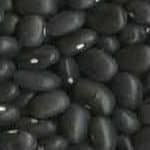 13. Black Beans (Frijoles Negros)
13. Black Beans (Frijoles Negros)
Zinc
per CupZinc
per 100gZinc
per 200 Calories2mg
(18% DV)1mg
(10% DV)2mg
(15% DV) -
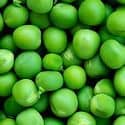 14. Green Peas
14. Green Peas
Zinc
per Cup CookedZinc
per 100gZinc
per 200 Calories2mg
(17% DV)1mg
(11% DV)3mg
(26% DV)See the top 10 vegetables high in zinc. -
 15. Spinach
15. Spinach
Zinc
per Cup CookedZinc
per 100gZinc
per 200 Calories1mg
(12% DV)1mg
(7% DV)7mg
(60% DV) -
 16. White Button Mushrooms
16. White Button Mushrooms
Zinc
per Cup CookedZinc
per 100gZinc
per 200 Calories1mg
(12% DV)1mg
(8% DV)6mg
(56% DV) -
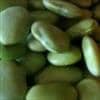 17. Lima Beans
17. Lima Beans
Zinc
per Cup CookedZinc
per 100gZinc
per 200 Calories1mg
(12% DV)1mg
(7% DV)1mg
(12% DV) -
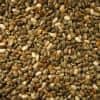 18. Chia Seeds
18. Chia Seeds
Zinc
per oz(~2 Tblsp)Zinc
per 100gZinc
per 200 Calories1mg
(12% DV)5mg
(42% DV)2mg
(17% DV) -
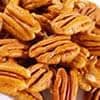 19. Pecans
19. Pecans
Zinc
per OzZinc
per 100gZinc
per 200 Calories1mg
(12% DV)5mg
(41% DV)1mg
(12% DV) -
20. Avocados
Zinc
per AvocadoZinc
per 100gZinc
per 200 Calories1mg
(12% DV)1mg
(6% DV)1mg
(7% DV) -
 21. Swiss Cheese
21. Swiss Cheese
Zinc
per OzZinc
per 100gZinc
per 200 Calories1mg
(11% DV)4mg
(40% DV)2mg
(20% DV) -
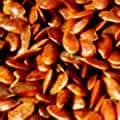 22. Flax Seeds
22. Flax Seeds
Zinc
per OzZinc
per 100gZinc
per 200 Calories1mg
(11% DV)4mg
(39% DV)2mg
(15% DV) -
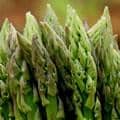 23. Asparagus
23. Asparagus
Zinc
per Cup CookedZinc
per 100gZinc
per 200 Calories1mg
(10% DV)1mg
(5% DV)5mg
(50% DV)
About the Data
Data for the curated food lists comes from the USDA Food Data Central Repository.
You can check our data against the USDA by clicking the (Source) link at the bottom of each food listing.
Note: When checking data please be sure the serving sizes are the same. In the rare case you find any difference, please contact us and we will fix it right away.
About Nutrient Targets
Setting targets can provide a guide to healthy eating.
Some of the most popular targets include:- Daily Value (%DV) - The daily value (%DV) is a general guideline for consumption that will prevent deficiency of a particular nutrient in most people. The %DV refers to the percentage of an amount that\'s found in a single serving of a food. It also accounts for absorption factors. It is set by the U.S. FDA.
- Recommended Dietary Allowance (%RDA) - The RDA sets an average daily dietary intake level that is sufficient to meet the nutrient requirements of nearly all (97.5%) healthy individuals. It\'s more specific than the daily value, and varies by age and gender. The RDA is set by the US National Institutes of Health.
- Reference Dietary Intake (%RDI) -The reference dietary intake is similar to the recommended daily allowance, but is specific to age and gender. The RDI for amino acids is set by the U.N. World Health Organization.
- Adequate Intake (%AI) - This value is primarily used in reference to omega-3 and omega-6 fats. The Adequate Intake is set by the U.S. Institute of Medicine. Because there is less evidence to determine the ideal targets for consumption of these nutrients, the specific amount is considered to be less reliable. Using the term Adequate Intake, rather than one of the other terms, helps to emphasize that the ideal intake of that particular nutrient has not yet been scientifically determined.
See the Guide to Recommended Daily Intakes for more information.
Want to set your own targets? Sign up for an account and set custom targets in the daily food log.From the Nutrient Ranking Tool
Use the ranking tool links below to select foods and create your own food list to share or print.
- Foods High in Zinc
- Foods Low in Zinc
- Vegetables High in Zinc
- Fruits High in Zinc
- Vegetarian Foods High in Zinc
- Nuts High in Zinc
- Grains High in Zinc
- Beans High in Zinc
- Dairy High in Zinc
- Breakfast Cereals High in Zinc
- Fast Foods High in Zinc
View more nutrients with the nutrient ranking tool, or see ratios with the nutrient ratio tool.
Related
Data Sources and References
Try the recipe nutrition calculator, or daily meal planner.
Create a free account to log and track foods.

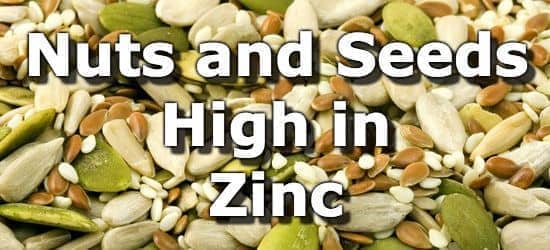 Next ➞
Next ➞